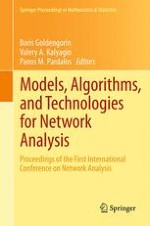Network Analysis has become a major research topic over the last several years. The broad range of applications that can be described and analyzed by means of a network is bringing together researchers, practitioners and other scientific communities from numerous fields such as Operations Research, Computer Science, Transportation, Energy, Social Sciences, and more. The remarkable diversity of fields that take advantage of Network Analysis makes the endeavor of gathering up-to-date material in a single compilation a useful, yet very difficult, task. The purpose of these proceedings is to overcome this difficulty by collecting the major results found by the participants of the “First International Conference in Network Analysis,” held at The University of Florida, Gainesville, USA, from the 14th to the 16th of December 2011. The contributions of this conference not only come from different fields, but also cover a broad range of topics relevant to the theory and practice of network analysis, including the reliability of complex networks, software, theory, methodology and applications.
